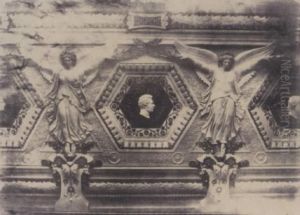Joseph Lemercier Paintings
Joseph Lemercier was a French artist, lithographer, and printmaker born in 1803 in Paris, France. He is particularly known for his contributions to the field of lithography, an art form that involves printing images onto paper from a smooth stone or metal surface. Lemercier's work and innovations in this medium were instrumental in the evolution of lithography during the 19th century.
In his early years, Lemercier trained under the artist Charles Motte, a well-known lithographer of the time. Lemercier's talent quickly became apparent, and he established his own lithographic workshop by the age of 22. As a master lithographer, he produced prints for many prominent artists of his era, including Eugène Delacroix and J.M.W. Turner. His Parisian workshop, Lemercier et Cie, became one of the most prestigious and innovative lithographic establishments in Europe.
Lemercier was not only a skilled printer but also an inventor and technician. He worked on improving the lithographic process, experimenting with various types of lithographic stones and printing techniques. His efforts led to the enhancement of the lithographic color process, making it possible to produce more vivid and detailed color prints. This was a significant development at a time when color printing was still in its infancy.
In addition to his technical work, Lemercier was also an educator and played a role in the training of future artists and lithographers. His workshop served as a hub for artistic activity and a place of learning for many young artists who would later become influential in their own right.
Joseph Lemercier's career spanned several decades, during which he made substantial contributions to the graphic arts. His work was widely recognized in his time, and he was lauded for the quality of his prints and his commitment to advancing the medium of lithography. He died in 1884, leaving behind a legacy that would continue to influence the field of printmaking for years to come.

